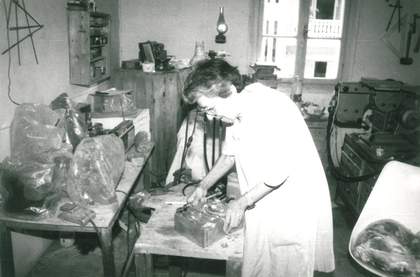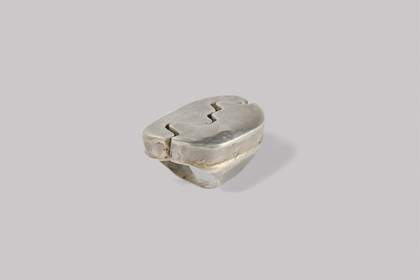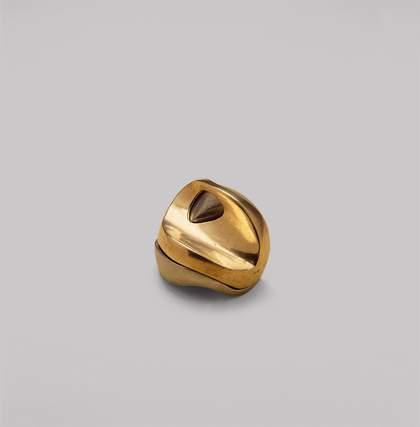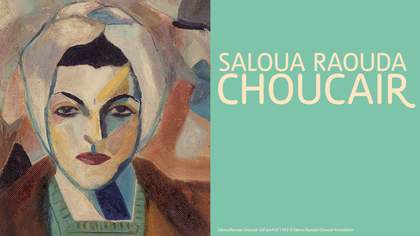Saloua Raouda Choucair is an artist with an incredibly wide-range of interests and artistic abilities. As well as raising three children and confronting the every day vagaries of the conflict in Lebanon (which lasted from 1975-1990) she managed to produce an impressive, coherent and inspired body of work. Having worked on the show, I wanted to share you with my personal fascination with her work.
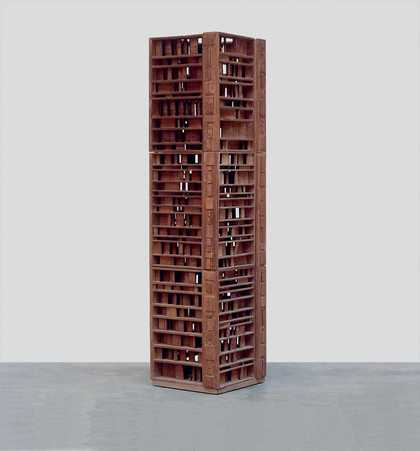
Saloua Raouda ChoucairSculpture with One Thousand Pieces 1966–8© Saloua Raouda Choucair Foundation
Choucair experimented with painting, jewellery, tapestry design, book illustrations, and sculpture as well as taking an avid interest in poetry, science and public art. In the second room of the exhibition a number of the paintings are in fact designs for public murals. Some of the sculptures in this exhibition such as Sculpture With One Thousand Pieces double up as lamps or other household objects. On display in the cabinet in Room 3 are two solid silver rings, which represent only a fraction of her entire production of jewellery.
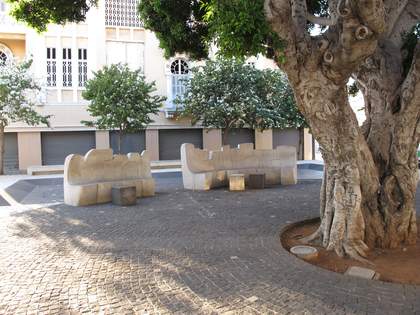
Choucair's public bench in downtown Beirut
Another wonderful piece in the cabinet is a small terracotta bench, a model for a much larger public bench which can be found today in downtown Beirut, loosely curved around an old tree. It is a wonderfully higgledy-piggledy design.
What astonishes me most about Choucair is the sheer complexity of her imagination: she could think about making art in both minuscule and gigantic scales and she left no detail of her sculptures unfinished. She thought each piece through inside out and back to front and on top of this, she had a particularly practical sensitivity, which led her to imagine objects that were not only beautiful but useful. She even designed an entire house that was made of fibreglass that she could turn and clean with a hose!
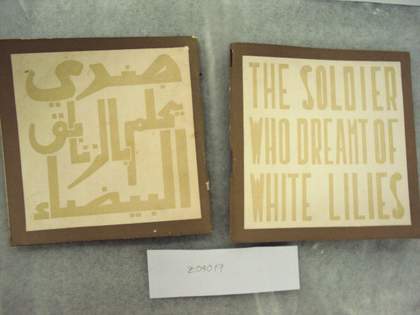
Mahmoud Darwish's The Soldier Who Dreamt of White Lilies
Although I love her grandiose plans and I continue to be fascinated every time I discover a new facet of her work, my favourite piece in the show is a small and unassuming document, which can be found in the vitrine in Room 3. It is a delicate little square book made of light brown paper. Choucair designed the covers and the illustrations for this work, which contains a poem by the famous Palestinian poet Mahmoud Darwish.
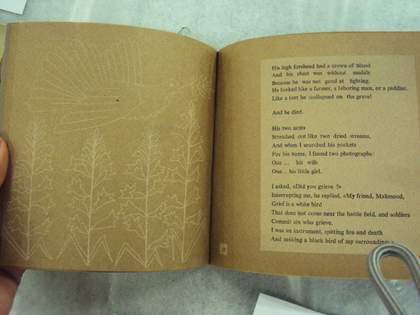
One of the illustrated texts in Mahmoud Darwish's The Soldier Who Dreamt of White Lilies
It can be read from left to right or right to left as the poem, The Soldier who dreamed of White Lillies, has been printed both in English and Arabic. On every page, a beautifully light and airy sketch of a dove (a rare figurative drawing amongst her mainly abstract illustrations for other books) accompanies the verse; and it was very unusual to print in white on dark paper, and still is. The book was made simply to help raise money for Palestinian refugees in the sixties and cost one dollar. For me, it represents the small but significant ways in which artists and poets can make a difference. It also shows quite how kaleidoscopic Choucair’s interests were.
Saloua Raouda Choucair is on display at Tate Modern and has been extended to 17 November 2013

